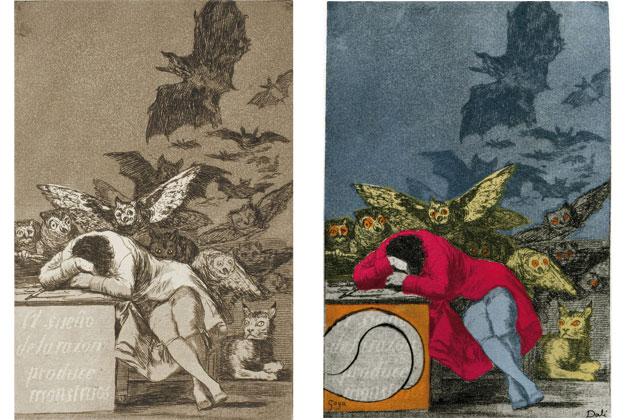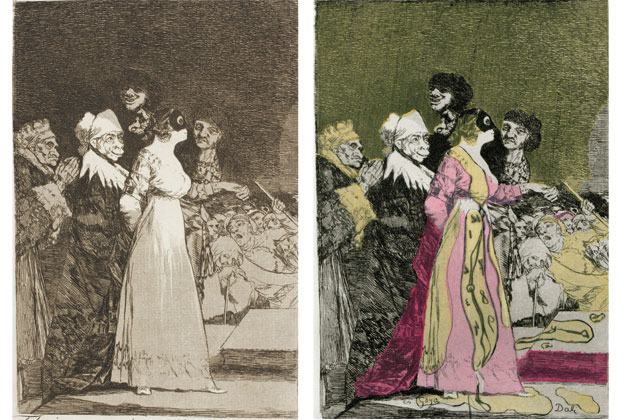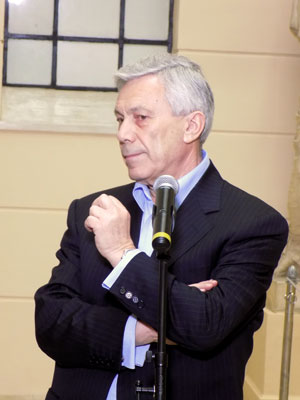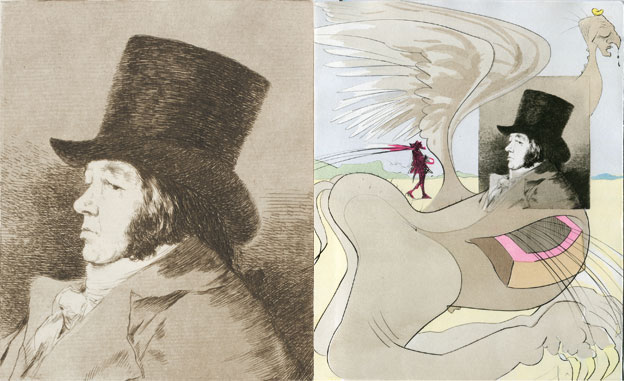Editions of livre d’artiste (books of artists) with original printed graphics of the first names of the twentieth century – this is the way how Boris Fridman defines the conceptual core of his collection.
The name of the genre in French is not surprising, because it appeared in Paris, France, in the second half of the twentieth century and lasted until the 1980s. This genre was formed in the space of artistic Bohemia, and in the creation of illustrated books was involved a wide circle of its friends around the world: publishers, artists and poets.
The Friedman collection is shown today at the Museum of Fine Arts (Pushkin Museum) at the exhibition “Caprichos. Goya and Dali”, complementing the collection of the Museum. This is the first exhibition of the specified subjects from the collection of B. M. Friedman. The exhibition will run from January 24, 2017 March 12, 2017.

The basis of the show – on the one hand, 80 satirical etchings of Goya, for the publication of which, in 1799, the artist had unpleasant consequences from the Inquisition and, on the other hand, 80 processing of these works by Salvador Dali.
Goya ridiculed the vices of the contemporary society of Spain of the XVIII century, and Dali “modified” them to the twentieth century. The revision was to change the name, to draw the characters and to color them. Each piece was processed in different manner. Somewhere Dali adds physiology, somewhere – meaning, somewhere paint.
Dali was not the first artist who started such a dialogue. Picasso was engaged in “conversation” with Velasquez, Manet – with other artists of the past. Through the dreams and nightmares, attributed to Goya, the surrealist Salvador Dali felt relationship with him.

Together with the exhibition in the Pushkin Museum, there will be held lectures and will be made a publication of scientific work. “I hope that we shall organize the presentation of the publication, which was first combined all the series of etchings by Goya and Dali, and largely commented upon the topic. A lot was done not only in order to hang and to show some of these etchings, but also for visitors. They can approach, understand and want to continue to see, to read and to learn. Works of Goya – it’s incredibly a modern thing. All statements Goya that read here, he did in 1799, and they are relevant today. If you read them abstract from remembering rime of creation, you agree they are written for today. That is why they are interesting,” said B. Friedman.

In an interview with cultural and political magazine “E-Vesti”, he explained his educational intentions.
E-Vesti: If I correctly heard what You said, that You are interested in the scientific level and the Museum level of immersion in the subject.
Friedman: What’s wrong with that? Collecting works of this genre, which involves all the architects and sculptors of the XX century, I can say that these editions contain the whole history of graphic art in all its meanings. And you can do any sort of exhibition with them. This is our fifteenth show, and we have a desire to do a number of other thematic exhibitions. The show must be themed about something, otherwise it is uninteresting. Every exhibition is an educational project, it has something to tell the person, something to teach him.
In this genre there is a lot of material. Artists accumulate around a lot of history, communication. There are many people involved in the process, there is the literature of any kind, and also the artists, and typographers, and designers. That is what I really wanted to show in the first place, among other ideas. Also I wanted to show together works by Goya and Dali, but to a greater extent, to explain the work of Goya, because this is the basis of all creation. Dali provided him a modern review, which makes it easier to understand Goya.
E-Vesti: Did you personally get a deeper understanding of Goya with a help of Dali? Had he highlighted something in his works?
Friedman B.: I think, yes.
For example, Dali changed names of Goya, it forced me to compare what he changed, why… There is not a coincidence, there’s nothing random there. Although the artist uses techniques of surrealism, by definition, accidental or momentary, he, at the same time, is very respectful to the source.
E-Vesti: Regarding the scientific world, is art of Goya and Dali studed in Europe today?
Friedman B.: I’m not researcher of art, it is difficult for me to say that. Of course, the right collection of art objects requires reading many art books…
But the theme certainly sounds in Europe. I’ve seen articles and books, and exhibitions dedicated to them, I am sure, took place.
E-Vesti: You had already put the collection in Europe or it is your first show?
Friedman B.: No, this happens here for the first time. We show here for the first time.




